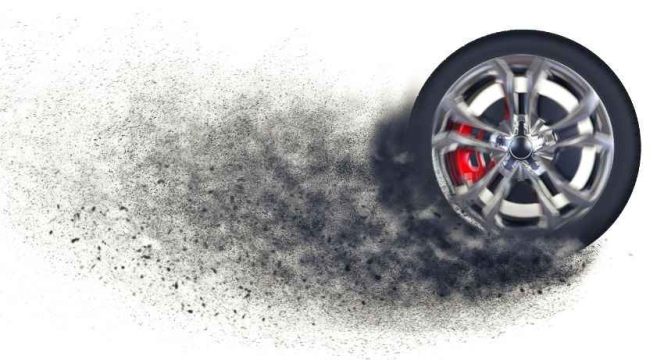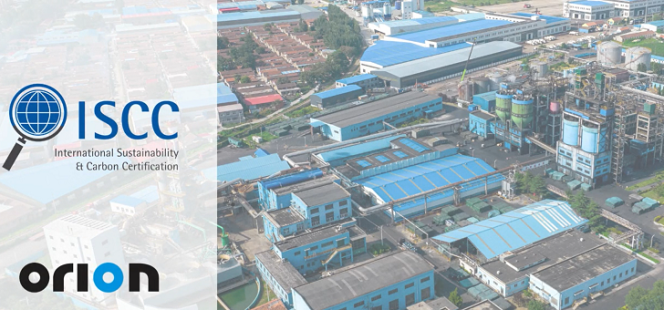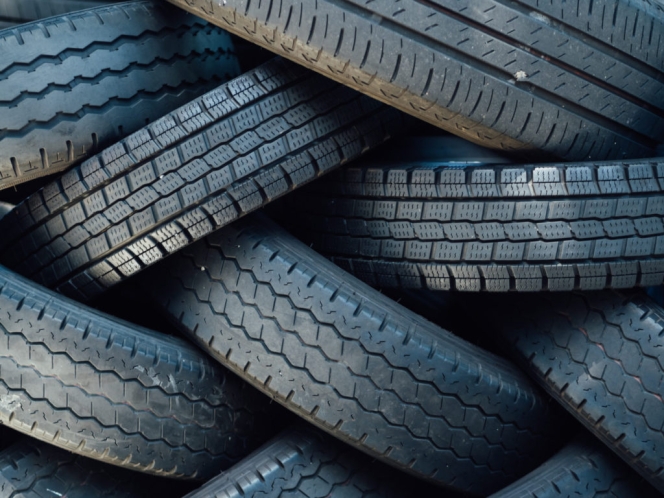TYRE DEBRIS IN AQUATIC ENVIRONMENT: THE NEW BLACK?
- By Louise Lynn Halle*
- August 26, 2020

Recently, models on the fate of tyre wear particles (TWPs) have estimated that 18% of TWP emissions are transported from roads to freshwater bodies and approximately 2% are led out to estuaries and then marine habitats. What then happens to the remaining 16% of TWP emissions left in the freshwater compartment is not yet clear
_0.jpg)
at Roskilde University, Department of Natural Science and Environment, Denmark,
with funds from Danish Environmental Analysis
The presence of tyre wear particles (TWP) in the aquatic environment is considered an emerging contaminant, and one that has gained increasing interest during the past few years. Although the presence of TWPs in the environment is given greater attention these days, TWPs have probably been present since the dawn of the pneumatic car tyre production in the late 19th century. The first scientific report of tyre dust identification along a roadside was published in 1961. Different perspectives have since been applied to this field of research and almost decade by decade shifted foci from degradation patterns to heavy metal release, to impacts of scrap tyres on the aquatic environment and leaching of chemicals from tyres. More recently, research within this field has been directed towards repurposing scenarios using crumb rubber in turf fields and playground material. Finally, in the 2010s, micronised tyre rubber has become grouped with other polymer debris and hence become part of the polymer landscape usually referred to as ‘microplastics.’ TWPs are considered to represent the majority of microplastics (or polymer debris) in the environment, and the newest calculation on the wear of tyres is estimated at 0.81 kg per person per year.
Now, looking at TWPs through the lens of microplastic pollution, research and information from the microplastics field are very well applicable to TWPs in many instances. With this new perspective of TWPs, increasing awareness of possible adverse effects in the environment follows - how do TWPs distribute in the different environmental compartments (soil, air, sediment, water and biota (living organisms)) and how do TWPs behave when exposed to different abiotic factors in these environmental compartments. For example, UV-radiation or pH, temperature and salinity differences could affect TWPs, but to what degree? A recent paper on this very subject concluded that particularly temperature and mechanical stress could influence the toxicity of TWPs. The focus of tyre production and function have seemingly always been directed towards maximising the three hallmarks: grip, wear and rolling resistance, and rightfully so, but somewhere along the road we forgot to consider where tyre abrasion actually disappears to. Luckily, some scientists already thought of this and today we can begin to lay the foundation to our collected TWP knowledge, based on the available scientific literature.
From roads to water
Research shows that the minority of TWPs end up in the airborne fraction (0.1-10%) and recently TRWPs have been assessed to contribute a low risk to human health in the particulate matter (PM) PM2.5 and PM10 range. So, where to find the remaining 90.0-99.9% of tyre debris emissions? Early research on particulate distribution showed a decreasing concentration of TWPs with increasing distance from the road. From there, TWPs are expected to wash off during rainfalls, transporting them to different environmental compartments. Recently, models on the fate of TWPs have estimated that 18% of TWP emissions are transported from roads to freshwater bodies and approximately 2% are led out to estuaries and then marine habitats. What then happens to the remaining 16% of TWP emissions left in the freshwater compartment is not yet clear and more research is needed to answer this question.
Aquatic organisms living in the water column or the sediment can interact with TWPs in their natural habitats during this particle transportation through freshwater to the marine environment. Although there are no scientific references on field observations of TWP ingestion by aquatic biota yet, few recent observations of this behaviour under controlled laboratory settings have been reported. In 2009 the first observation of the water flea, Daphnia magna, ingesting TWPs was described in the scientific literature and only two years ago the first photos were published showing ingestion of TWPs in the benthic amphipod Gammarus pulex following sediment exposure. Shortly thereafter photos of TWP ingestion in the amphipod Hyalella azteca and opossum shrimps from the mysidae family followed after water-only exposures, and most recently freshwater and marine fish species have been documented ingesting TWPs under laboratory conditions.
The recent focus on particulate effects of TWPs on biota is still in its infancy and the latest development in this field investigates the possible effects of both the particulate fraction and the leachate fraction. The leachate fraction is the suite of chemicals that leach out from TWPs to the surrounding water. Previously, tyre toxicity investigations in the aquatic environment revolved solely around the leachate fraction, which has been the primary focus over the last 30 years. Among the first papers the effect of whole tyre leachate was investigated showing worn tyre leachate to exhibit greater toxicity than leachate from a pristine tyre to rainbow trout. Furthermore, decreasing toxicity was observed with increasing salinity indicating that salinity either influences the leachability of toxic constituents or that an interaction of salts and toxic chemicals is present. Exposure of shredded tyre chips to different bacteria likewise showed a correlation between decreasing toxicity and increasing salinity, concluding that tyre leachate is likely to be a greater threat to freshwater habitats than to estuarine or marine habitats.
Toxicity pattern

Further testing of TWPs and leachate on a freshwater species recently showed a dissimilar toxicity pattern when comparing acute toxicity responses of TWPs or leachate. Here, the amphipod H. azteca was exposed to either TWPs in freshwater or the leachate fraction alone, i.e. with no particulates present. This showed that leachate was more toxic in lower concentrations, presumably because dissolved chemicals are more bioavailable. Although, at higher concentrations, the particle fraction of TWPs became more toxic. This phenomenon very well describes the complexity and discrepancies when working with TWPs in the aquatic environment. It is not just a question of determining toxicity of a single chemical under controlled settings, but rather investigating a mixture of many chemicals in changing ambient environments. This complex matrix of polymer and chemicals can be more or less bound to the particle, which in itself might have adverse effects. However, the particle could also function as a vessel, containing chemicals and making them more or less bioavailable depending on the surrounding environment. Discovering exactly which chemicals leach out under different exposure scenarios, and most importantly, what of that is actually bioavailable to aquatic living species is the more interesting question to answer.
Due to the amorphous nature of rubber, end-of-life tyres (ELTs) have been used as leachate collection material and been used to collect polycyclic aromatic hydrocarbons (PAHs) and metals from contaminated waters. This discrepancy between the different TWP uses that in some cases could deem toxic and have adverse effects but at the same time might serve to mitigate other environmental issues is a great conflict of contradictory traits. Now, we need to unravel exactly when these contradictory traits are possibly affecting aquatic environments negatively and when these traits might be used for our advantage.
So how do scientists quantify TWPs and chemical constituents or ‘biomarkers’ from TWP leachate in water? The quick answer is that no tried and tested procedure is more right than any other now, we simply do not have conformity or guidelines on how to do this. Especially when looking to find particulates from tyre debris, as this is not usually detected when investigating for other polymer debris e.g. microplastics. Therefore, it is expected that the total amount of microplastics has been underestimated due to the lack of data from TWPs, which make up a large part of the estimated microplastic load worldwide and have not been reported on a regular basis. A multitude of methods have been used to estimate TWP emissions by measuring the concentration of chemicals in samples, with more or less success over the years. The biomarkers that have been used to determine TWP concentration most successfully include quantification of benzothiazoles and zinc. Both chemicals are used as part of the vulcanisation process and are also ubiquitous in nature. They are used for manufacturing of other materials, but specific versions can be attributed mainly to tyre manufacturing and are thus the most reliable compounds to measure.
How this emerging field of tyre ecotoxicology will progress ultimately depends on cooperation between different stakeholders having a common goal to pursue. The one thing that we can probably all agree on, is the need for tyres and other rubber products in our society. How we then fill that need, and what future decisions we make to maximise our understanding of the possible negative implications of TWPs in the aquatic environment is of paramount importance. Our job now is to continue our research within this field and ultimately prevent excess and unnecessary pollution of the water bodies that we all depend on, in a manner that stays true to both the environment and our need for safe and reliable tyres.
*The author is a PhD student in Environmental Biology at Roskilde University, Department of Natural Science and Environment, Denmark, with funds from Danish Environmental Analysis
References
1. Thompson. Identification of vehicle tyre rubber in roadway dust. Am Ind Hyg Assoc 27, 488–495 (1966).
2. Lassen, C., Hansen, S.F., Magnusson, K., Norén, F., Hartmann, N.I.B., Jensen, P.R., Nielsen, T.G., Brinch, A. Microplastics - Occurence, effects and sources of releases to the environment in Denmark. (Danish EPA, 2015).
3. Boucher, J. & Friot, D. Primary microplastics in the oceans: A global evaluation of sources. (2017). doi:10.2305/IUCN.CH.2017.01.en
4. Kole, P. J., Löhr, A. J., Belleghem, F. G. A. J. Van & Ragas, A. M. J. Wear and tear of tyres : A stealthy source of microplastics in the environment. Int. J. Environ. Res. Public Health 14, 1265 (2017).
5. Kolomijeca, A., Parrot, J., Khan, H., Shires, K., Clarence, S, Sullivan, C., Chibwe, L., Sinton, D., Rochman, C. Increased Temperature and Turbulence Alter the Effects of Leachates from Tyre Particles on Fathead Minnow (Pimephales promelas). Environ. Sci. Technol. 54, 1750–1759 (2020).
6. Unice, K. M., Panko, J.M.., Chu, J. & Kreider, M. L. Measurement of airborne concentrations of tyre and road wear particles in urban and rural areas of France, Japan, and the United States. Atmos. Environ. 72, 192–199 (2013).
7. Kreider, M. L., Unice, K. M. & Panko, J. M. Human health risk assessment of Tyre and Road Wear Particles (TRWP) in air. Hum. Ecol. Risk Assess. 0, 1–19 (2019).
8. Unice, K. M. et al. Characterizing export of land-based microplastics to the estuary - Part I: Application of integrated geospatial microplastic transport models to assess tyre and road wear particles in the Seine watershed. Sci. Total Environ. 646, 1639–1649 (2019).
9. Unice, K. M. et al. Characterizing export of land-based microplastics to the estuary - Part II: Sensitivity analysis of an integrated geospatial microplastic transport modeling assessment of tyre and road wear particles. Sci. Total Environ. 646, 1650–1659 (2019).
10. Wik, A. & Dave, G. Occurrence and effects of tyre wear particles in the environment - A critical review and an initial risk assessment. Environ. Pollut. 157, 1–11 (2009).
11. Redondo-Hasselerharm, P. E., de Ruijter, V. N., Mintenig, S. M., Verschoor, A. & Koelmans, A. A. Ingestion and chronic effects of car tyre tread particles on freshwater benthic macroinvertebrates. Environ. Sci. Technol. acs.est.8b05035 (2018). doi:10.1021/acs.est.8b05035
12. Khan, F. R., Halle, L. L. & Palmqvist, A. Acute and long-term toxicity of micronized car tyre wear particles to Hyalella azteca. Aquat. Toxicol. 213, 105216 (2019).
13. Halle, L. L., Palmqvist, A., Kampmann, K. & Khan, F. R. Ecotoxicology of micronized tyre rubber : Past , present and future considerations. Sci. Total Environ. 135694 (2019). doi:10.1016/j.scitotenv.2019.135694
14. LaPlaca, S. B. & van den Hurk, P. Toxicological effects of micronized tyre crumb rubber on mummichog (Fundulus heteroclitus) and fathead minnow (Pimephales promelas). Ecotoxicology (2020). doi:10.1007/s10646-020-02210-7
15. Kellough, R. M. The effects of scrap automobile tyres in water. (1991).
16. Day, K. E., Holtze, K. E., Metcalfe-Smith, J. L., Bishop, C. T. & Dutka, B. J. Toxicity of leachate from automobile tyres to aquatic biota. Chemosphere 27, 665–675 (1993).
17. Abernethy, S. The acute lethality to rainbow trout of water contaminated by an automobile tyre. (1994).
18. Hartwell, S. I., Jordahl, D. M., Dawson, C. E. O. & Ives, A. S. Toxicity of scrap tyre leachates in estuarine salinities: Are tyres acceptable for artificial reefs? Trans. Am. Fish. Soc. 127, 796–806 (1998).
19. Hartwell, S. I., Jordahl, D. M. & Dawson, C. E. O. The effect of salinity on tyre leachate toxicity. Water. Air. Soil Pollut. 121, 119–131 (2000).
20. Gunasekara, A. S., Donovan, J. A. & Xing, B. Ground discarded tyres remove naphthalene, toluene, and mercury from water. Chemosphere 41, 1155–1160 (2000).
21. Edil, T. B., Park, J. K. & Kim, J. Y. Effectiveness of scrap tyre chips as sorptive drainage material. J. Environ. Eng. 130, 824–831 (2004).
22. Lisi, R. D., Park, J. K. & Stier, J. C. Mitigating nutrient leaching with a sub-surface drainage layer of granulated tyres. Waste Manag. 24, 831–839 (2004).
23. Aydilek, A. H., Madden, E. T. & Demirkan, M. M. Field evaluation of a leachate collection system constructed with scrap tyres. J. Geotech. Geoenvironmental Eng. 132, 990–1000 (2006).
24. Alamo-Nole, L. A., Perales-Perez, O. & Roman, F. R. Use of recycled tyres crumb rubber to remove organic contaminants from aqueous and gaseous phases. Desalin. Water Treat. 49, 296–306 (2012).
25. Alamo-Nole, L. A., Perales-Perez, O. & Roman-Velazquez, F. R. Sorption study of toluene and xylene in aqueous solutions by recycled tyres crumb rubber. J. Hazard. Mater. 185, 107–111 (2011).
26. Parker-Jurd, F. N. F. Napper, I. E. Abbott, G. D. Hann, S. Wright, S. L. Thompson, R. C. Investigating the sources and pathways of synthetic fibre and vehicle tyre wear contamination into the marine environment (project code ME5435). (2019).
27. Kumata, H., Yamada, J., Masuda, K., Takada, H., Sato, Y., Sakurai, T., Fujiwara, K. Benzothiazolamines as tyre-derived molecular markers: Sorptive behavior in street runoff and application to source apportioning. Environ. Sci. Technol. 36, 702–708 (2002).
28. Klöckner, P., Reemtsmp, T., Eisentraut, P., Braun, U., Ruhl, A.S., Wagner, S. Tyre and road wear particles in road environment – Quantification and assessment of particle dynamics by Zn determination after density separation. Chemosphere 222, 714–721 (2019).
- Orion S.A.
- International Sustainability and Carbon Certification
- ISCC
- Sustainable Materials
- Speciality Chemicals
Orion Achieves ISCC Certification For Qingdao Plant
- By TT News
- January 16, 2026

Orion S.A., a global speciality chemicals company, has successfully secured the prestigious ISCC – the International Sustainability and Carbon Certification for its manufacturing facility located in Qingdao, China. This significant achievement is the direct result of a rigorous, independent audit process which validated that the plant’s operations fully comply with the comprehensive sustainability criteria established by ISCC.
The certification serves as a formal verification of both the transparency and the complete traceability of the sustainable raw materials integrated into the facility’s production value chain. This milestone is a key component of Orion’s overarching corporate strategy to implement and enhance sustainable practices throughout its international operations.
By achieving this globally recognised standard, the company reinforces its commitment to supplying clients with high-performance carbon black and other speciality chemical products that adhere to leading international environmental and sustainability benchmarks, thereby supporting customer goals for more responsible manufacturing.
Ecolomondo Secures USD 2.7 Million Financing From EDC
- By TT News
- January 15, 2026

Ecolomondo Corporation, a Canadian developer of sustainable technology for recycling scrap tyres, has secured a provisional financing agreement with Export Development Canada (EDC) for USD 2.7 million. The funds are intended to support the final ramp-up phase of its Hawkesbury thermal decomposition plant by covering necessary capital investments and operational working capital.
Following months of negotiation, both parties have agreed in principle to the loan terms, which include augmenting an existing USD 2 million credit facility established by a subsidiary, Ecolomondo Environmental (Hawkesbury) Inc, in January 2025.
Furthermore, EDC has conditionally approved a temporary suspension of principal and interest payments for loans from 2024 and 2025, applicable during the facility's 2026 ramp-up period. This financial arrangement is designed to provide the liquidity required to advance the project to full operational capacity, pending the finalisation of formal documentation.
Jean-François Labbé, Interim CEO, Ecolomondo Corporation, said “We have been working steadily in Hawkesbury, hiring, training, increasing production, increasing sales and, most of all, improving efficiency. This additional financing from EDC is greatly appreciated and should allow the Hawkesbury TDP facility to achieve its full potential.”
Cabot Earns Higher CDP Water Score, Maintains Climate Rating In 2025 Assessment
- By TT News
- January 14, 2026

Cabot Corporation said it has received improved environmental ratings from CDP, reflecting continued progress in water management and steady performance on climate disclosures.
In CDP’s 2025 assessment, the company was awarded an A- rating for Water Security, up from a B in 2024, and a B rating for Climate Change, unchanged from the previous year. Cabot said the water score exceeded both global and industry averages, recognising its approach to managing water-related risks and implementing sustainable water practices.
The Climate Change rating remained stable year on year, with improvements reported in areas including climate risk disclosure, value chain engagement and industry collaboration.
The latest scores extend a five-year pattern of incremental improvement, achieved amid more demanding reporting standards and rising expectations from regulators, investors and customers.
“We are proud that CDP’s independent assessment reflects our ongoing efforts to enhance environmental performance and transparency,” said Jennifer Chittick, senior vice-president for Safety, Health and Environment and chief sustainability officer. “The improvement in our Water Security score demonstrates our leadership in this critical area, and we remain committed to advancing our sustainability strategy across all domains. This progress was made possible by our dedicated, global team, and we remain focused on driving further improvements in the years ahead.”
CDP assesses companies on environmental impact across climate change, water security and deforestation, using a scale from D for Disclosure to A for Leadership. In 2025, more than 24,800 companies were rated, representing about two-thirds of global market capitalisation.
Cabot said the results underline its focus on transparency and responsible environmental management as it continues to execute its sustainability strategy.
Liberty Tire Upgrades Recycling Facility, Expands Capacity
- By TT News
- January 14, 2026

A USD 1.4 million equipment enhancement at Liberty Tire Recycling’s Cameron, North Carolina, facility is set to significantly boost its processing capabilities. This upgrade, enabled by the state’s sustainable financial backing of its scrap tyre programme, will allow the facility to handle an extra 3,300 tonnes of material annually, representing nearly 300,000 passenger tyres.
A key improvement is the increased capacity to process truck tyres, which are more challenging to recycle due to their size and durable steel components. The resulting crumb rubber, highly sought after by manufacturers, will be directed towards producing floor mat bases and rubber tiles made entirely from recycled material. This material also serves as a component for athletic tracks, synthetic turf, rubberised asphalt and various moulded products.
This capital investment follows North Carolina’s legislative action to redirect tyre disposal fees into the state’s scrap tyre management system, a move that includes compensating counties for collection and recycling expenses. With North Carolina establishing itself as a centre for tyre recycling, Liberty Tire indicates it is evaluating further multi-million-dollar investments and job creation across its other operations in the state.







Comments (0)
ADD COMMENT